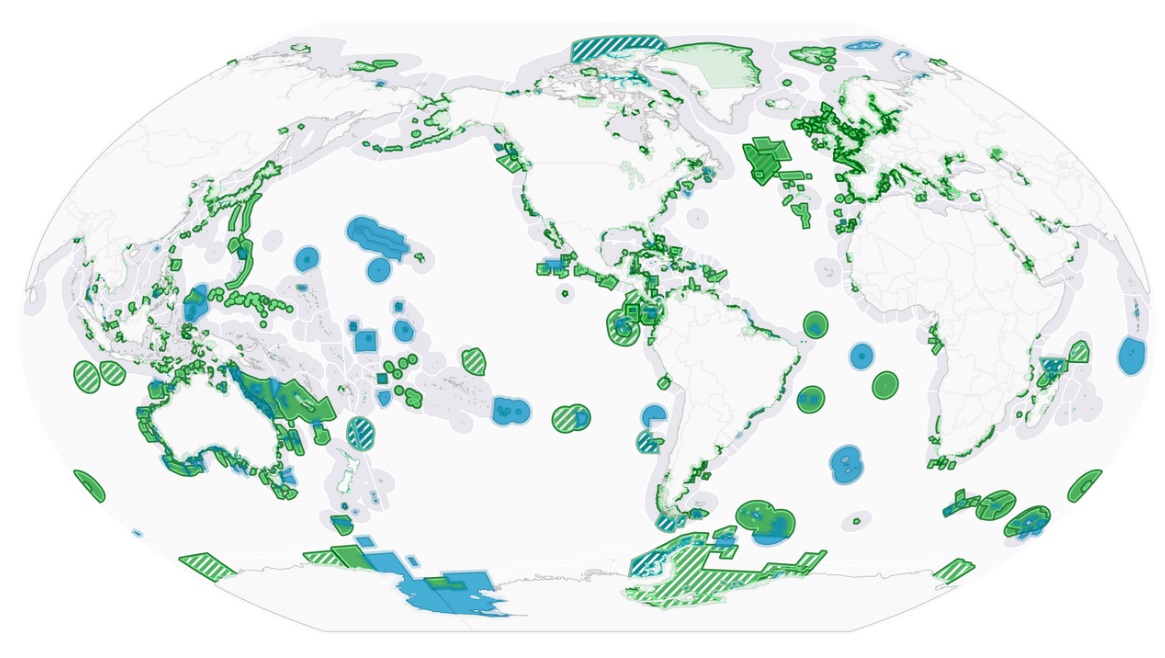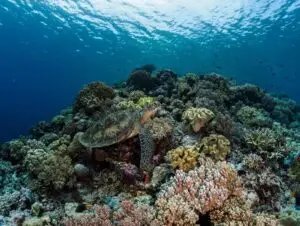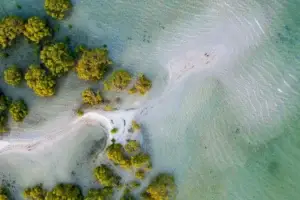by David Freedman Coral Reef Conservation and Biodiversity Awareness | Early Career Ocean Professional (ECOP)
-
Marine Protected Areas (MPAs) play a vital role in preserving marine ecosystems, supporting biodiversity, and mitigating the effects of climate change.
Establishing an MPA can be daunting, especially when working within limited budgets.
1. Engage Local Government and Stakeholders
Your first step in creating an MPA is to engage with your local government, communities, and key stakeholders. Securing their buy-in early ensures long-term support and helps you understand legal requirements and regulations.
Depending on the legislation, different MPAs have different qualifying features.
-
Initial Meetings: Meet with local environmental agencies, fisheries departments, and coastal management authorities. Present validated data showing the ecological and economic benefits of MPAs, including enhanced fish stocks, ecotourism potential, and why and what features make this particular area designated as an MPA.
-
Public Consultations: Arrange consultations with local communities, especially fishermen, indigenous groups, and businesses. The MPA will directly affect their livelihood, and addressing their concerns early helps minimize resistance. The most successful MPAs are typically driven by the local community and continue to thrive through strengthened partnerships with the government, fostering municipal oversight and effective management.
-
Legislative Review: Work with legal advisors to identify the relevant local, national, and international laws governing MPAs. In the U.S., for example, the Marine Protection, Research, and Sanctuaries Act (1972) provides the framework for creating MPAs.
2. Choose a Sustainable Location
Selecting the appropriate location for your MPA is crucial for both its ecological impact and its financial feasibility. A good example is Tubbataha Reefs Natural Park in the Philippines, a UNESCO World Heritage Site that was designated as an MPA in 1988. It covers over 97,000 hectares and is funded through tourism fees and government subsidies.
Biodiversity richness: Areas with unique marine species or ecosystems are more likely to gain funding and governmental protection.
Economic viability: Look for regions where eco-tourism, sustainable fishing, or other revenue-generating activities can supplement the MPA’s budget.
Existing legal frameworks: Leveraging national or regional environmental protection laws, such as the Endangered Species Act (ESA) or the Marine Protection, Research, and Sanctuaries Act, can reduce costs by using existing frameworks for enforcement.
3. Identify Sustainable Funding Sources
Financing an MPA requires creative thinking, especially if public funding is limited. Fortunately, there are multiple avenues for securing funding, from government grants to innovative financial mechanisms.
-
Government Grants and Subsidies: Many countries provide grants for environmental conservation. In the U.S., for instance, the NOAA: National Oceanic & Atmospheric Administration offers grants for coastal and marine habitat restoration under programs like the National Coastal Zone Management Program.
-
Blue Bonds: These are financial instruments similar to green bonds but focused on marine conservation. Seychelles, for example, issued a successful blue bond to fund its marine conservation efforts.
-
NGO and Philanthropic Partnerships: Partner with NGOs that focus on marine conservation, such as The Nature Conservancy or WWF. These organizations can provide both financial and technical assistance.
-
Tourism Revenues: MPAs often boost eco-tourism. Implementing small user fees for tourists (such as snorkeling permits) can generate a steady revenue stream.
4. Conduct a Cost-Benefit Analysis
A well-conducted cost-benefit analysis (CBA) helps you evaluate the financial viability of the MPA by comparing its costs with the long-term benefits to the environment and economy.
Estimate Costs: This includes the upfront cost of establishing the MPA (e.g., boundary markers, monitoring equipment), as well as ongoing management costs (e.g., enforcement, monitoring programmes/data collection, maintenance, staff salaries).
Quantify Benefits: These can include increased fish stocks, enhanced biodiversity, and income from eco-tourism. The Great Barrier Reef Marine Park Authority is an example of how an MPA can generate millions in tourism revenue annually.
Net Present Value (NPV): Using NPV calculations, it is possible to estimate the future economic value of your MPA. For example, a 2016 study estimated the total net benefits of MPAs globally at $920 billion over 35 years, largely due to enhanced fisheries and tourism.
5. Draft a Budgetary Framework
Budgetary frameworks are critical for managing costs and ensuring the MPA’s long-term financial stability.
Initial Setup Costs: These may include:
-
Boundary demarcation (buoys, signage)
-
Permits and legal fees
-
Education and outreach materials
-
Scientific studies to establish baseline data
Ongoing Costs: These will vary depending on the size of the MPA but typically include:
-
Enforcement (patrol boats, staff)
-
Monitoring and scientific research
-
Maintenance of infrastructure (buoys, signage)
-
Community engagement and education programs
Funding Sources Allocation:
Allocating funding sources to each cost component. For example, tourism revenues could cover ongoing monitoring, while grants could fund initial setup costs.
Example: Papahānaumokuākea Marine National Monument:
When creating the Papahānaumokuākea Marine National Monument, one of the largest MPAs in the world, stakeholders identified an initial budget of $18 million for setup and annual maintenance costs of around $6 million. By combining government funding (NOAA: National Oceanic & Atmospheric Administration and U.S. Fish and Wildlife Service (USFWS)) with private donations and research grants, the MPA achieved sustainable financing.
6. Build Partnerships for Long-Term Management
Collaboration with government agencies, NGOs, and local communities is crucial for the long-term success of your MPA. For example, the California Marine Protected Area Network works closely with universities and local conservation groups to monitor and enforce its MPAs.
-
Universities and Research Institutions: Partner with local universities to conduct scientific research, which can also provide baseline data for future monitoring efforts.
-
Citizen Science Programs: Engage local communities in data collection and monitoring efforts. This reduces enforcement costs and builds local support.
-
NGOs: NGOs often have the expertise and resources needed to assist with the long-term management of MPAs, offering training and funding to local authorities.
7. Measure and Report on Impact
Measuring the impact of your MPA ensures that it remains effective and provides the data necessary for continued funding. Key performance indicators (KPIs) include fish stock levels, biodiversity metrics, and eco-tourism revenues.
-
Set Baselines: Establish environmental baselines before the MPA is created. This will allow you to track improvements over time.
-
Quarterly/Annual Reports: Produce an quarterly/annual impact report detailing progress. Governments and funders will expect to see tangible results, such as improved fish populations or increased tourism revenue.
-
Use Adaptive Management: Adjust management strategies based on what is working and what is not. If illegal fishing persists, for example, consider increasing enforcement patrols or adjusting the boundaries.
Creating an MPA on a budget is not only possible but also a highly effective way to protect marine biodiversity and enhance local economies. By engaging stakeholders early, identifying sustainable funding sources, conducting a thorough cost-benefit analysis, and establishing a clear budgetary framework, you can ensure the long-term success of your MPA.
The success of Papahānaumokuākea Marine Debris Project, Inc shows that strategic partnerships, a mix of public and private funding, and strong community engagement are the pillars of a financially viable MPA.
By following these steps, you can build an MPA that balances ecological protection with economic sustainability—ensuring that your efforts have a lasting impact on both marine life and local communities.
I want to give a special thank you to Nicola Hodgins for taking the time to critique this article to ensure it’s authenticity in advance.
As she pointed out to me, you need to ensure that people know that it’s not always as easy as just choosing an area, finding the funds and then designating. In her native area of Scotland for example, designation only comes from the government – “we lobbied with evidence, community support etc. for over 10 years before we got the designation and 4 years later we’re still waiting for any kind of management.” -Nicola.
Nicola is someone who’s been fighting the good fight for Scotland’s Marine Protected Areas (MPAs) while having to take on the monumental challenge of struggling with government approval. We could all learn something from her battles. Keep going Nicola!
Sources:
-
NOAA, Marine Protection, Research, and Sanctuaries Act (1972)
-
WWF, Reviving The Economy Of The Mediterranean Sea (2017)
-
Papahānaumokuākea Marine National Monument Annual Report (2022)
-
UNESCO World Heritage. “Tubbataha Reefs Natural Park.” [whc.unesco.org](https://whc.unesco.org/en/list/653/).
-




